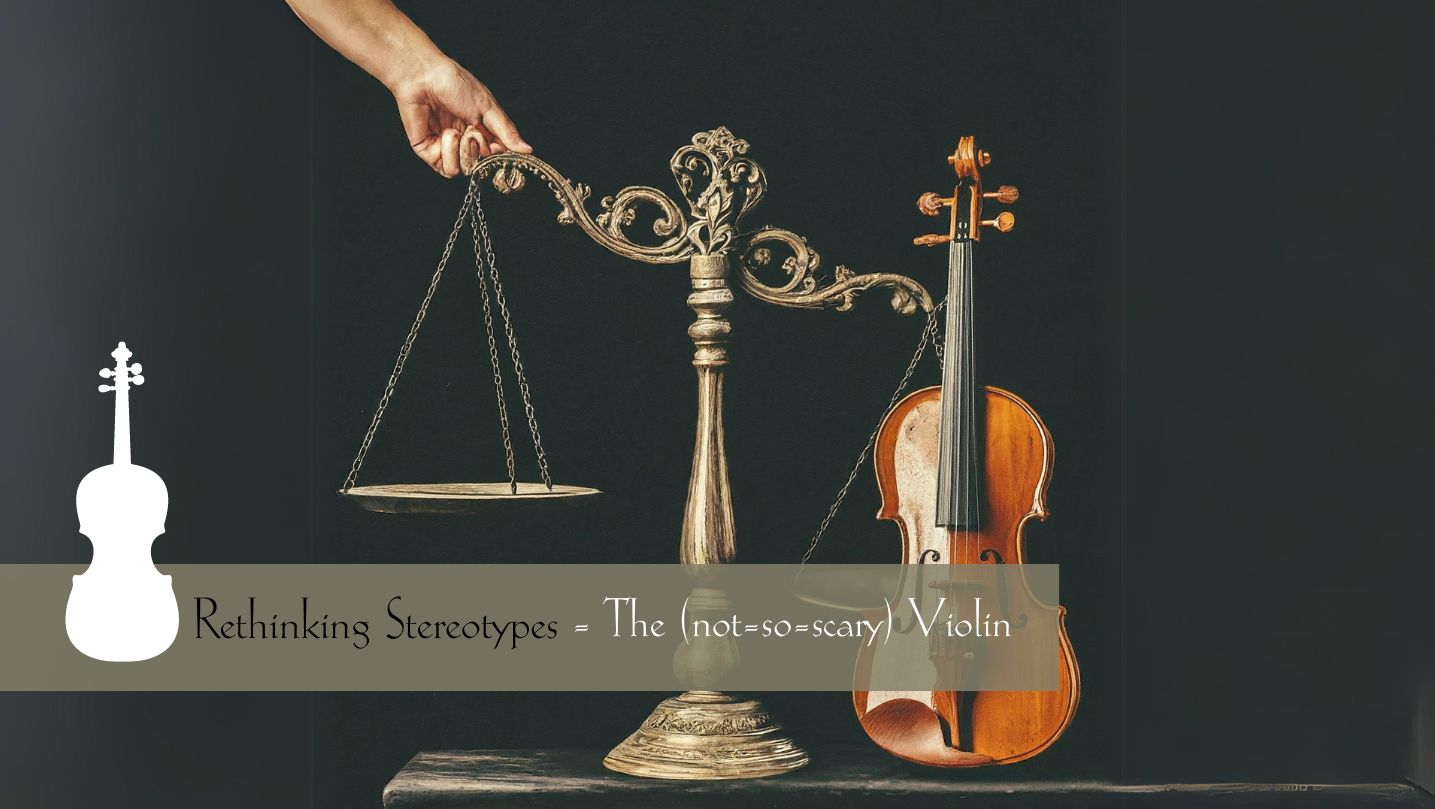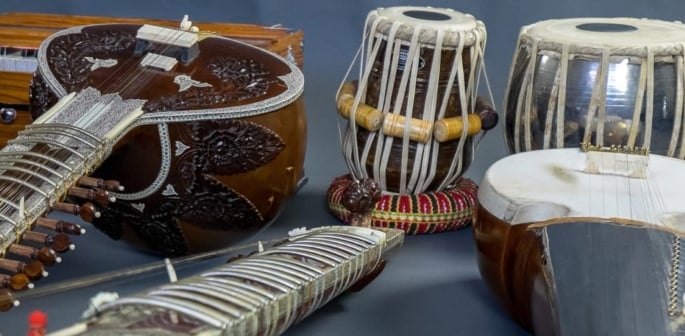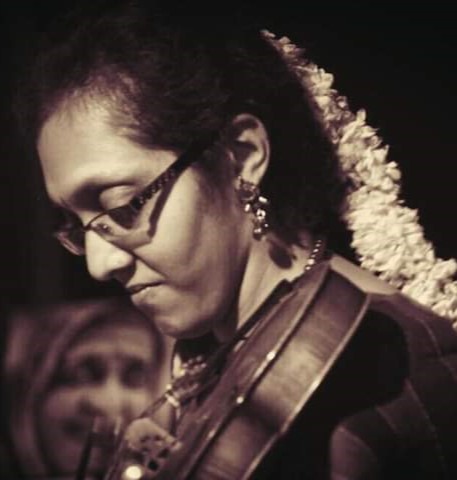
A few days ago, someone came up to me and said, "You teach the violin? But the violin is the most difficult instrument to learn!" Well, my first thought was one of indignation... it was on the tip of my tongue to say, "Says who??", but I held my tongue and replied very politely that some do say so, but I don't really feel the same.
As I continue writing this, my GP teacher's voice starts echoing loud and clear in my ears saying, "That is a blatant over-generalisation! You should be writing an essay on over-generalisation, not arguing the topic!" So firstly, from a language perspective, since this magazine is about art and culture, and language, let me get this straight. To say the violin is THE most difficult instrument to learn, is an over-generalisation. But, to bring it into perspective, let me take this on the premise that the person meant to say that the violin is so tough to learn, and it must be so difficult to teach, as that's where the conversation eventually led.
If we look at Western musical instruments, among the string instruments, yes, the violin and the rest of the family - viola, cello and double bass - may be considered the most difficult. But when you look at Indian instruments, it's a completely different ballgame!
For good measure, I asked my newest set of students, who have been learning for around 3 months, for their opinion on the same topic. The most entertaining response I got was from a lady who said, "Well, I think it's something akin to taking aarati with 1 hand and ringing the bell with the other! - both hands working in tandem but doing unrelated actions..." - that had the whole class in peals of laughter!
Indian instruments are so very unique in nature. For example, the Veena & the Sitar have frets for the notes, the way the Guitar has. Placement of the notes may be made simpler this way, but to acquire the skill of strumming as it should be done, takes a lot of practice. There are additional strings used to keep the tempo as these instruments do not sustain, as the violin does since it is bowed and not plucked. These strings – taalam strings on the Veena, and Chikaari strings on the Sitar – have to be strummed in the right manner and in the required timing, with other fingers. And if you take the Indian percussion instruments like the Tabla, to get your right and left hand to coordinate, to be in similar positions but do different actions also requires immense practice, to say the least. To get sound from it, using the action of just striking your fingers on the skin surface without the assistance of the palms or the rest of the hand is extremely tough – trust me, I have tried and I consider it much more difficult than playing the violin!

So coming back to the violin… The foremost reason people think the violin is difficult, is that it does not have frets or any markers for the positions. So when you play the violin, you are completely dependent on your listening skills to know if your positions are correct. Some students come with some basic musical knowledge so it is just a little easier for them to catch the positions of the notes. But nowadays, Western violin teachers mark the positions of the notes on the fingerboard, so that it is easier for the students. Personally I have adopted the same technique, as the bowing is of utmost importance and I find that the moment students are introduced to the positions of the notes, they forget to pay attention to the bow, and then they don’t get to improve their sound quality. Bowing is to the violin, as breathing is to singing. The better control you have over your breath, the better you can manage the nuances in your singing, and your intonation. The same goes for the violin. When you have control of your bow – that is when your violin can sing and make your listener dance to your music.
An Indian traditional instrument that is much more difficult to play than the violin is the Sarangi. The Sarangi, like the violin, does not have frets. What makes it so tough to play is that it isn’t played with the fingertips, like most other instruments, but with the cuticles of the nails! The name of the instrument is said to be modified from “sou-rangi”, meaning 100-coloured. The music from the Sarangi is truly heart-wrenching and tugs at your heart strings, which is why the name. By playing with the cuticles, the tone is dampened, compared to the tone of the violin, and oftentimes you will swear that it is someone singing!
Basically, when it comes to anything new, the important thing to remember is to approach learning it as a child learns – with complete excitement and gusto! A baby turning over does not know how to keep its head up and keeps knocking its nose – but that does not deter it from trying. An infant learning to walk keeps falling after taking a step or two… but you cannot tell the infant – hey that’s enough trying for today, it will hurt! The infant will give you an innocent smile, and try again! This is precisely what we forget as we grow up. We think that since we are older and can understand better, learning should come more easily. But that isn’t so with learning any skill. We still need to go through the grind of trying, practicing, and improving; and the more excitement and enthusiasm with which we approach it, the more fun it will be.
So, if you would like to make people dance to your tune, literally, rest assured, the violin isn’t all that difficult, and if you put your mind, heart and soul to it, it’s yours to enjoy!
 Smt Laavanya K Kharat is a Hindustani Violinist & Violin Teacher at Shivanjali's Temple of Fine Arts Coimbatore. Laavanya had her initial violin training in the Western classical style, but has been training in, performing and teaching Hindustani Shastriya Sangeet (classical music) on the violin, for the last 14 years. She's a student of violin maestro Padmabhushan Smt Dr N Rajam, and learns vocal music from Shri Kedar Kharat, Hindustani vocal teacher at Shivanjali. Laavanya holds a degree in Psychology and English Literature, and writing is one of her many hobbies.
Smt Laavanya K Kharat is a Hindustani Violinist & Violin Teacher at Shivanjali's Temple of Fine Arts Coimbatore. Laavanya had her initial violin training in the Western classical style, but has been training in, performing and teaching Hindustani Shastriya Sangeet (classical music) on the violin, for the last 14 years. She's a student of violin maestro Padmabhushan Smt Dr N Rajam, and learns vocal music from Shri Kedar Kharat, Hindustani vocal teacher at Shivanjali. Laavanya holds a degree in Psychology and English Literature, and writing is one of her many hobbies.
NEXT ARTICLE